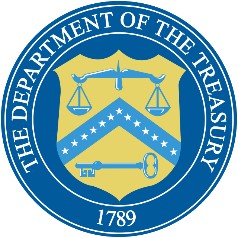Published in The New Jersey Planner, September/October, 2013
Digital signs are becoming the rage. They come in many varieties. Some scroll a single color; some have multiple colors, but limited definition; and some of the newest are like beautiful, big screen TV’s.
The major concerns regarding this new technology have to do with driver distraction, the potential for honky-tonk advertising, and the intensity of light emitted. To use a word from the sound world, digital signs can be loud and undermine the look, restfulness, and character of neighborhoods. Sure, these message boards have their place. Now is the time for municipalities to step up and determine where.
Recently, as reported in this publication, two exciting cases have come to our attention. Both have a potential to impact your community’s action with regard to digital billboards.
In a recent unpublished case, Judge Buchsbaum, in the Somerset County case E&J Equities, LLC v. Board of Adjustment of Franklin, SOM-L-1526-10, decided the matter on January 4, 2013; he struck down an ordinance that allowed billboards, but prohibited digital billboards. The Judge found the municipality’s reasoning constitutionally inadequate. The Township argued that digital billboards are too distracting to drivers and are not attractive.
Judge Buchsbaum, offered advice: “…rather than place an absolute ban on digital billboards, the Township could have placed ‘restrictions on letter height to width ratio size and font, luminosity, light spillage and message length, as well as other bulk and design standards’.” Page 17 of the Decision. So, these restrictions would be a good place to start.
You may be able to go farther, as we learned in the recent case of Interstate Outdoor Advertising v. Zoning Board of Mount Laurel, No. 11-3837 Third Circuit Opinion by McKee (February 11, 2013). In that case, the Third Circuit found that Mount Laurel had satisfied its burden of establishing that its ordinance banning all billboards was constitutional. Mount Laurel argued the same things that Franklin had, that billboards impact traffic safety and that they would undermine the natural beauty of their community.
The Federal Court found, however, that Mount Laurel had presented substantial evidence supporting its goals. Normally, the billboard industry relies upon the impact of such regulations on non-commercial speech. In this case, the Court found that this ordinance did not regulate content, that there were ample alternative means of communication, and the Township’s reasoning was sound; so it found the ordinance withstood the constitutional test.
Mount Laurel carried the day because it had performed a substantial study supporting its views. In addition, the Court found that ample alternative means of communication existed. Therefore, it is possible that Mount Laurel had just the right circumstances to support a ban. With that said, you can certainly dampen the impact that digital signs might have by imposing reasonable conditions, as suggested by Judge Buchsbaum.
Recently, at the NJAZPA mid-year conference, a question was asked about conversions of existing signs to a digital format. Such changes should require a minor site plan. It may be wise to codify this view and require any new digital sign or conversion to submit a minor site plan, so you can reduce the potential negative impacts arising from a given sign.
Requiring site plans in conjunction with reasonable regulation should help your community to properly manage this major advancement in technology.
Be careful to stay away from attempting to regulate messages. The Court has found in Rogers v. Zoning Bd. of Adjustment of Village of Ridgewood, 309 N.J. Super. 630 (1998), that while we can regulate the size location lighting, we cannot regulate the message of the sign. However, I think you may be able to limit advertising on the sign to the establishments located within the property limits, and you may be able to get applicants to voluntarily agree to restrict their advertising of such information as drink prices or specials.
The First Amendment protects our right to political and non-commercial speech. In an attempt to ensure this protection, the courts will err on the side of allowing substantial latitude to commercial communication as well. However, when the circumstances and sufficient government rationale can be articulated, some limited control of commercial speech can occur.
Finally, you need to educate yourself as to the capabilities of digital signs. The industry will refer to the brightness of light emitted from the digital sign in terms of nits. The word nit is believed to come from the Latin word nitere, which means “to shine.” It is a unit of measure of luminance. According to Wikipedia, one nit is equal to one candela per square meter (1cd/m2). To give you a frame of reference, most consumer desktop displays have a luminance of 200 to 300 cd/m2. HDTV’s range from 450 to about 1000 cd/m2.
It was a pleasure shining some light on this topic. For a copy of Judge Buchsbaum’s Decision, go to the Bulletin Board tab on Dennis Galvin’s website bio.













